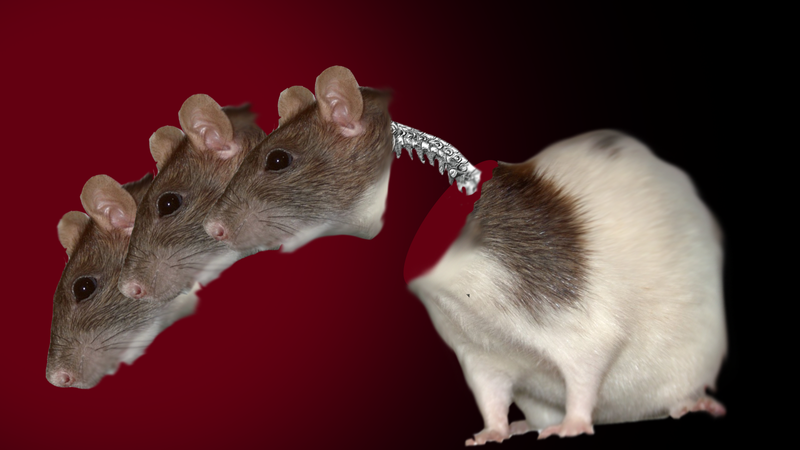 Image: Ryan F. Mandelbaum/Brandonng06/Wikimedia Commons
Image: Ryan F. Mandelbaum/Brandonng06/Wikimedia Commons
Sergio Canavero wants to transplant a head, and we can’t look away. Despite our continued skepticism, he does seem to be making progress. “Seem” being the operative word here, because others still aren’t convinced by the evidence.
Canavero and a team of Chinese doctors at Harbin Medical Center have announced that they’ve successfully severed and re-attached a spine in rats. Their paper, published in the journal CNS Neuroscience and Therapeutics, doesn’t mention head transplantation. But re-attaching a spine would be one of the many necessary hurdles should his team even try a head swap in humans.
Before we get to the prospect of human head transplants, let’s take a look at this new study. The team opened up fifteen rats and sliced up their spinal cords, although the study notes that “no gap resulted.” Then, six control rats received a saline injection in the cut, and nine received an injection of polyethylene glycol there instead. This substance, the researchers wrote, could “restore the integrity of sharply severed nerve fibers or seal the membrane of damaged neurons,” based on past research, by fusing the fibers back together.
All but one of the rats, a saline control, survived the operation. None of the controls could walk afterward, but all of the polyethylene glycol-injected rats regained at least some of their walking ability a month afterward.
These experiments are a lot like the ones that the researchers previously performed in rats and dogs, but those trials met some controversy, as we reported; the samples were small, controls were missing, and there wasn’t proof that the researchers had completely severed the spine.
That’s sort of the problem here, too. One researcher, Jerry Silver, from Case Western Reserve University, Ohio, had a massive heap of skepticism to lump on the paper. The conclusion implies that the researchers had only severed and repaired part of the spinal cord, not the whole thing. The recovery scores were completely unrealistic given only a month of recovery time, he said. The team didn’t demonstrate that axons, the long part of the nerve cells, had actually grown back.
Canavero has met similar skepticism for his past work. Last year he claimed to transplant a monkey head, and that the monkey survived for 20 hours post-operation, but that seemed like an effort to get press, and the claim didn’t come with a published paper (I can’t find it if it’s already been released). Also, if you’ve read the whole proposal, it sounds insane, and critics think it’s based on “bad science.”
That being said, Newsweek reports that, while a Chinese national will replace the Russian man who volunteered for the first transplant, the team still plans to perform the operation in December. Canavero said he’d have a “global” press conference with further details.
Listen, Canavero—we’re definitely interested, but given the extreme nature of such an operation, no one is going to believe you until others have reproduced your methods—that’s just how science works.
Or until some dude is walking around with a brand new body.
[CNS Neuroscience and Therapeutics via Newsweek]